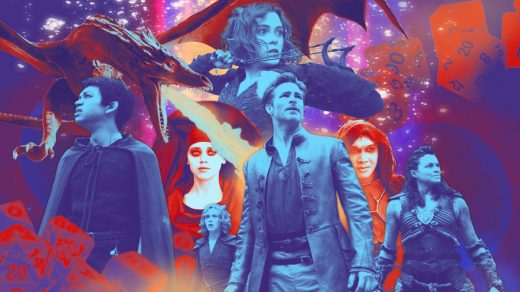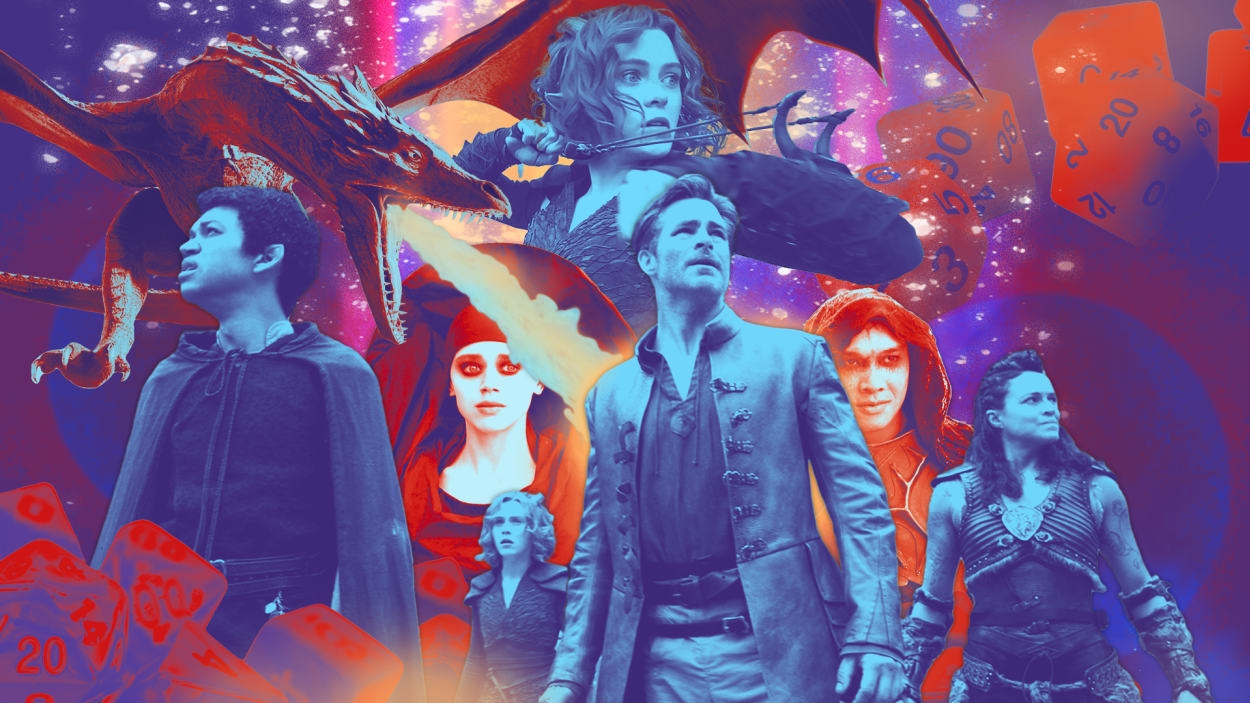The $1 billion company behind ‘Dungeons & Dragons’ is coming out of the basement
Behind a faded facade of brick and tinted glass, in an office park tucked away from a busy road in Bellevue, a satellite city of Seattle, a group of travelers gathers. On this dreary morning in March, they’re preparing to set out on a quest.
Among their group is a half-orc fighter, a human wizard, a halfling rogue—and me, a brawny dwarven cleric named Dorbin.
The de facto guide of this little odyssey, the “dungeon master” in Dungeons & Dragons-speak, explains that our merry band of fictional bravehearts has stumbled into a tavern in search of food and drink. “It’s the only alehouse and inn for miles around,” says Kale Stutzman, a game director at Wizards of the Coast, the Hasbro-owned publisher of the fantasy role-playing game. “You guys have stopped here for a rest, and perhaps to find some adventure.”
Unfortunately, our expedition is waylaid before it can really begin, thanks to Dorbin, who hears some suspicious sounds emanating from within the bar’s foundation and decides to investigate. Sadly, the poor guy’s method of inquiry, swinging a giant axe directly into one of the walls, succeeds only in setting fire to the tavern. “Fires erupt out of the couple of places where there are candelabras,” Stutzman tells our group. “This place is groaning and could collapse.”
I feel like a kid again, in the best way.
This ill-fated journey, which I’ve embarked on with a group of Wizards employees in a wood-paneled conference room inside the company’s headquarters, is actually a test of One D&D, an upcoming edition of the 49-year-old game. Due for release next year, One D&D will feature changes to signature elements like combat rules and character creation—the sort of stuff that will leave fans chattering for months. We’re playing the game on Wizards’ forthcoming virtual tabletop platform, which substitutes the pencils and maps—the traditional tools of the game—with a keyboard and 3D rendering of the story settings. The platform even includes detailed avatars for each character, which makes Dorbin’s costly blunder appear all the more jarring.
Even now, in this staged and abbreviated campaign—games can typically take three hours at a time, though story arcs may take months or years to complete—I’m reminded of why D&D is so appealing, even when you haven’t played in about 20 years. The game is at once meticulous and unrestrained, allowing participants to create their own characters based on a set number of archetypes, including race (human, gnome, dragonborn) and class (barbarian, sorcerer, cleric).
Operating under the dungeon master’s thumb, players rely on a guiding set of rules and their own imaginations to peregrinate through any number of far-flung backdrops that come courtesy of Wizards as well as a third-party ecosystem of unaffiliated publishers who basically have carte blanche to riff on the original intellectual property. And there’s a bit of luck involved: Polyhedral dice determine whether a given action was successful, and to what degree. It’s Middle Earth-esque improv that connects players to the very thing that makes this world so exceptional: our capacity for storytelling.
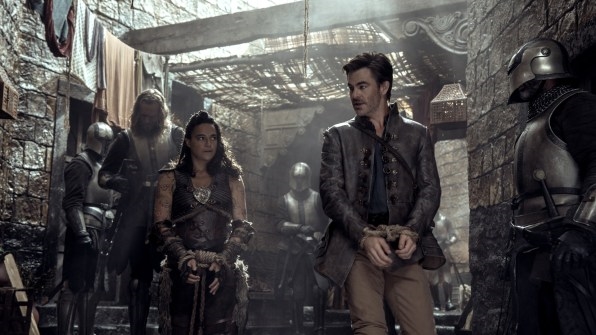
Now the driving force behind those stories is having a major cultural moment. This week saw the release of the film Dungeons & Dragons: Honor Among Thieves, starring Chris Pine, Hugh Grant, and Michelle Rodriguez. Blending action, comedy, and fantasy, the movie (which was produced by Paramount Pictures and sports a $151 million budget) represents an ambitious effort to introduce Wizards’ IP to the masses while also appealing to the game’s die-hard fans. Once stigmatized as the stuff of basement-dwellers and satanists, D&D is coming into the mainstream.
The timing for the film couldn’t be more auspicious. D&D now counts celebrities like Vince Vaughn, Dwayne Johnson, Drew Barrymore, and Joe Manganiello among its devotees. LinkedIn cofounder Reid Hoffman says the game taught him to think strategically at an early age. The Duffer Brothers credit it for inspiring Stranger Things, their hit Netflix series. Hasbro doesn’t give exact figures for D&D in public filings, but it estimates that some 50 million people have played the game since its debut.
“There’s a lot of evidence out there about the social benefits of role-playing together,” Wizards CEO Cynthia Williams tells me sometime after my trip to Bellevue. “It gives people an opportunity to try out ways of expressing themselves and who they are.”
“The real opportunity for Dungeons & Dragons is that we’ve got a whole generation of kids and there’s no stigma about elves and dwarves and whatnot,” says Nathan Stewart, the franchise head at Wizards.
And Wizards isn’t letting that opportunity pass it by. In addition to the film, the company has a spin-off television series in the works with Paramount+, and a new video game. Even as it chases these new mediums, Wizards is also tightening its grip on the sprawling network of tabletop gamers who are the heart and soul of the brand’s staying power. Most strikingly, it acquired the digital tool set and online marketplace D&D Beyond last May for $146 million, a move that will integrate nicely into the upcoming virtual tabletop that I experience in Bellevue. (Wizards says it now has 12 million registered users on D&D Beyond.) Of course, not everyone is pleased. Some worry that in its tireless search for profits—and, arguably, power—D&D has lost its way.
Oh, and in case you were wondering, Dorbin did make it out of the burning tavern, but thanks to an unlucky roll of the dice he wound up barreling out the door and tumbling over a cliff’s edge. Stutzman can barely contain his chuckle as he announces to the room: “Dorbin falls out and right into the water.”
The history of Dungeons & Dragons can be traced back, appropriately enough, to a basement. Gary Gygax’s, to be precise. Gygax and fellow game designer Dave Arneson had worked on a number of other tabletop adventures, including Chainmail and Don’t Give Up the Ship. As Gygax once told an interviewer, with D&D the idea was to create “an amalgam of medieval history and . . . fantasy material.” After creating the company TSR in 1973, they began self-publishing D&D out of Gygax’s house in Wisconsin, initially printing 1,000 copies. Within a few years their creation was a minor hit, selling hundreds of thousands of copies.
“What it did that Chainmail didn’t do is, it had this concept of playing individual characters,” says Jon Peterson, a historian and author of The Elusive Shift: How Role-Playing Games Forged Their Identity. “Having your surrogate in the game world enabled this strong identification with the character that was integral to the development of the concept of role-playing.”
Interest in the game waxed and waned in the decades that followed, though its reputation as a nerd’s pursuit stayed constant. A reputational low point came during the “Satanic Panic” of the late 1970s and ’80s, catalyzed by a few cases of suicide by teenage D&D enthusiasts. Though the connection between the game and the deaths was tenuous at best, a number of religious groups staged boycotts. All the publicity caused sales to soar, from $2.3 million in 1979, to $8.7 million the following year.
Nonetheless, TSR was struggling, thanks in no small part to a 1979 lawsuit by Arneson against Gygax over royalties. Saddled with debt, TSR was acquired for $25 million in 1997 by Wizards of the Coast, publisher of the hugely popular card series Magic: The Gathering and later Pokémon. When Wizards itself was acquired two years later by Hasbro for $325 million, D&D suddenly found itself part of a massive portfolio that included titles like Transformers and G.I. Joe.
“I’m not speaking for Hasbro here, but I think that [Magic and Pokémon] were the assets that they were attracted to, and getting Dungeons & Dragons when they purchased Wizards of the Coast was kind of a side effect,” Peterson says. “And for a while the D&D team was given a great deal of latitude because it was a marginal part of the overall Wizards of the Coast business compared to the trading card games.”
Though the resurgence of Dungeons & Dragons has often been linked to its appearance in plotlines of shows like The Big Bang Theory and Stranger Things (in the latter’s case, much of the lore is lifted directly out of a dungeon master’s rule book), that’s not entirely accurate. There were a number of major developments that came first. For one, a 2014 update to the rule book streamlined the game mechanics and, as franchise head Stewart tells me, “focused on making it open and inviting.” And it wasn’t just the gameplay that needed a refresh. Over the years, Wizards has removed some of D&D’s more dated iconography: sexualized female characters, racist tropes, and so forth. “We made sure that we weren’t perpetuating any stereotypes that make people feel like this game is insulting,” says Kyle Brink, D&D’s executive producer.
The game has also taken off digitally. Though it’s hard to get an official figure, D&D has increasingly moved from literal tabletops to virtual ones. The emergence of these virtual platforms, created initially by third-party companies, finally allowed people who were not in the same room to play with one another, knitting connections among gamers who span continents. That evolution has coincided with the rise of video platforms like YouTube and Twitch, which made possible an entire cottage industry of livestreamers. “That demystified the game,” Stewart says. “All of a sudden you watch people playing online, you’re like, ‘It’s a bunch of friends making fart jokes and drinking beer.’”
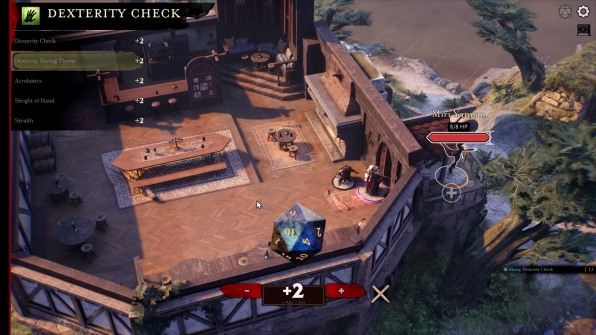
The pandemic—and the attendant boom in virtual gaming—ushered in another surge in popularity for D&D. Analysts believe the game today rakes in between $100 million and $150 million in annual revenue, according to Forbes. That’s not exactly enormous compared to Hasbro’s $5.86 billion in revenue for 2022, but it’s growing. According to Wizards, D&D’s revenue has grown for eight straight years. Wizards, for its part, took in $1.3 billion in 2022, accounting for 22% of Hasbro’s total earnings. That figure will likely grow under Hasbro CEO Chris Cocks, who was president of Wizards until he took the helm of its parent company in February 2022 and who knows the D&D ecosystem well.
It’s not just Wizards that makes money from D&D. An entire ecosystem of publishers and creators, selling everything from storylines to Twitch streams, has been built off of the company’s IP. This ecosystem is possible thanks to D&D’s Open Game License, or OGL, which is as core to D&D as monsters and weapons. The roughly 900-word framework, created in 2000, allows any player to monetize the tabletop experiences they create, so long as they don’t use official content like characters and settings. If you’re a popular Twitch streamer or a third-party publisher, the OGL allows you to convert your constructions into a revenue stream. For many it’s a kind of benchmark of purity—evidence that, even under Hasbro’s ownership, the folks at Wizards are intent on keeping the collaborative, freewheeling spirit of the game intact.
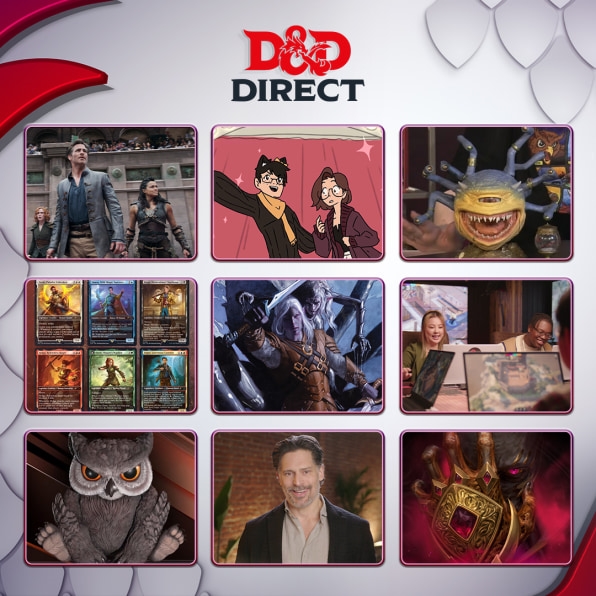
That goodwill was shattered in January, when a leaked draft of an updated, 9,000-plus-word OGL was obtained by the website io9. The revisions were seismic: a 20% to 25% royalty on revenue for anyone earning more than $750,000 in annual sales; the right for Wizards to use anything created under the OGL for any purpose; and, crucially, the voiding of any content made under the guidance of the original OGL. For third-party publishers whose business revolves around D&D products and campaigns released in accordance with the original license, that last stipulation was key, as it meant they might have to scramble to comply with the new rule.
The backlash was immediate and intense. More than 77,000 D&D fans signed an open letter claiming the new OGL “chokes the vibrant community that has flourished under the original license,” and bemoaning Wizards’ “anti-competitive, monopolistic behavior designed to crush small businesses that collectively employ hundreds of designers, writers, and artists.” Game companies like Kobold Press, Paizo, and Goodman Games, which had been creating D&D publications under the OGL, saw sales to their own rival role-playing games skyrocket.
Within two weeks, Wizards was walking back the changes. “[W]e rolled a 1,” read a company statement issued January 13, adding that the leaked draft of the license was indeed a draft, and was intended to encourage feedback from creators. Wizards also emphasized that the revision was intended to help crack down on “hateful and discriminatory products” and to prevent new products, like third-party NFTs, from eroding the franchise. “We love D&D’s devoted players and the creators who take them on so many incredible adventures,” the statement continued. “We won’t let you down.”
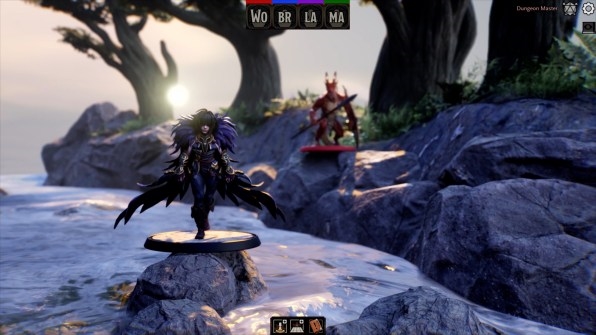
Ultimately, Wizards abandoned efforts to revise the OGL, and even moved its Systems Reference Document—a subsection of D&D’s official mythology and rules—under a Creative Commons license, which “means that they are fully in your hands,” as Brink, the executive producer, put it in an accompanying statement.
But that was little consolation to someone like Zane Eaton, a Texas-based dungeon master. In Eaton’s mind, the whole affair was emblematic of the dangers of having a game like D&D under the guidance of a company beholden to shareholders. The proposed revisions to the OGL were “absurdly one-sided,” he says. “This is a tabletop game, and you kind of make it all up as you go along. I don’t think Wizards really understood their own core market at all.” Eaton has since moved both of his playing groups over to Paizo’s role-playing game Pathfinder.
Matt Tracey, a dungeon master in Pennsylvania, says that while the ordeal won’t necessarily stop him from playing D&D, it has given him pause. “Ripping away a license that was supposed to be in place in perpetuity is a slap in the face to everybody who developed that,” he says. “It takes away the fun.”
In Bellevue, I talk to a handful of executives about the OGL fiasco, and they all have basically the same response: owning up to the mistake, and reiterating that changes to the OGL were never intended to affect the so-called mom-and-pop player. “D&D has incredibly passionate fans,” says Dan Rawson, the game’s senior vice president. “When we get things right, it’s awesome. And when we get things wrong, those very same people let us know. And, boy, did they ever let us know.”
Williams, for her part, says the company learned a valuable lesson: “We got away from what has always worked for us, and the teachable moment is: Don’t do that,” she says.
I ask her if sticking with the original OGL might mean that D&D misses out on future-proofing the company’s IP in the face of emerging technologies, namely Web3. “Yes, there are certain risks that we’re taking on,” she concedes, “the same way that we’re taking on the risk that someone can put out hateful content. This was another place where we felt like we have to trust our community, that they’ll make the choices around which content they want to engage in.”
For plenty of diehards, that’ll be enough to forgive and forget. But love can be fickle, and for many the OGL error is unforgivable. Fortunately for Wizards, new players may be waiting in the wings, thanks to Chris Pine’s solid punch lines and even more impressive jawline.
A few days after my visit to the Wizards office, I’m sitting in a beautiful old movie theater in downtown Austin at the height of South by Southwest pandemonium, watching the world premiere of Dungeons & Dragons: Honor Among Thieves. The energy in the room is palpable. There’s not an empty seat to be found, and the audience is cheering and laughing as a likable band of heroes takes on an assortment of foes, both human and non.
Speaking later to Jeremy Latcham, one of the film’s producers, I’m reminded of the unique challenge of making something with cross-spectrum appeal. “I think we were able to craft something that works for an audience of regular people who know nothing about the game, and also works for people who are hard-core lovers of the game,” Latcham says. (It’s worth noting that Honor Among Thieves is in no way a sequel or reboot of the execrable 2000 adaptation starring Jeremy Irons.)
I’m no critic, but I loved every minute of Honor Among Thieves. So, it seems, did the real critics. “‘Dungeons & Dragons: Honor Among Thieves’ steals SXSW,” declared the Austin American-Statesman. “The New ‘Dungeons & Dragons’ Movie Actually Rules,” proclaimed The Daily Beast. As of this writing, the film has a 90% rating on the review aggregator Rotten Tomatoes.
Not content to simply screen a darling action movie, Paramount also created an experiential marketing campaign for Honor Among Thieves at SXSW, transforming a perfectly modern Austin bar into, well, a vaguely medieval-looking one. And so, with images of my old friend Dorbin’s fiery tavern mishap flashing through my brain, a day after the premiere I walk into the life-size diorama to gaze at the swords and shields adorning the walls and to sample the special Dragon’s Brew (a Moscow Mule with blue curaçao).
As I take my first sip, I notice a man wearing a green robe at the end of the bar. Thinking he must surely be a D&D fan, I walk over and meet Quinn Bratteng.
An Austin local, Bratteng has been playing D&D since 1990. Though he didn’t manage to get a ticket for the premiere, he says he’s “cautiously optimistic” about the film. “They got a lot of really talented actors involved, and the effects look really good,” he says. Bratteng was put off by the OGL saga, but he says he’ll keep playing the game and is excited to finally see Wizards’ big Hollywood swing—even if (and we’re being technical here) a druid could never morph into an owlbear, as happens to a character in Honor Among Thieves, much to some viewers’ chagrin.
“A lot of people have been futzing over the druid character,” Bratteng says with a chuckle. “That’s not something to throw a fit about. It’s a movie.”
(32)

